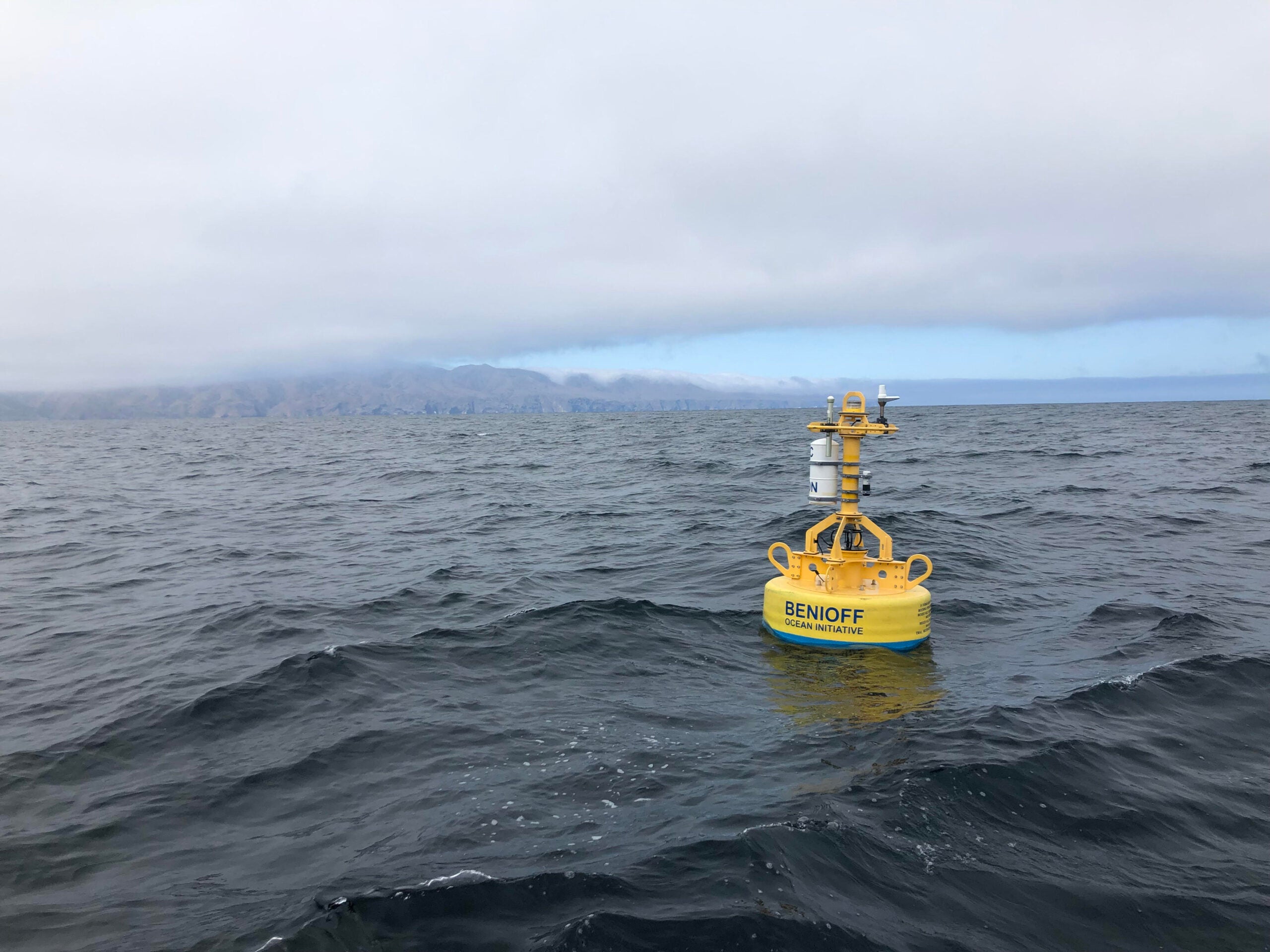About 20 miles offshore from Martha’s Vineyard, a yellow robotic buoy is bobbing in place just above the waves. Like most data-collection buoys, this moored robot is eavesdropping on the world under the waves. But unlike most buoys, which function like floating weather stations, this one from the Woods Hole Oceanographic Institution (WHOI) is listening for whales in the area in real-time. Just this week, it detected the presence of a sei whale and a fin whale.
That buoy is one out of the many robots deployed by WHOI off of the East Coast and West Coast of the US. These buoys are autonomous platforms tuned into the melodies of a range of different whales: sei whales, fin whales, blue whales, humpback whales, but most notably, right whales, which are critically endangered.
Right whales play a vital role in the ocean food web. Like other filter feeders, they eat zooplankton and tiny crustaceans, then recycle and redistribute nutrients like iron back into the ocean as they poop. Whales also act as valuable carbon stores, and when they die and sink, their corpses transform into pop-up habitats for critters on the ocean floor. But their numbers have been dwindling again since around 2010, despite a slight uptick in population in the early 2000s. Currently, it’s estimated that there are only 360 of the animals left. The most common causes of right whale deaths are entanglement in fishing gear and ship strikes, though it’s suspected that climate change may also become a threat. Other human activities in the ocean that can affect their behaviors include loud, unusual noises such as construction or sonar.
However, some scientists think that using sea-faring robots that can detect the presence of whales could help humans navigate more carefully around them. In March, WHOI announced that it was collaborating with a French shipping company to figure out how to incorporate information from the robots into their business operations.
Mark Baumgartner, a marine ecologist at WHOI whose lab operates these buoys, along with robotic gliders that can move across the sea to scope out where whales are, says that they’re also working with wind energy companies, NOAA, the US Navy, state agencies, and Canadian researchers on ways to use these tools to reduce the risk of harms to the animals.
On the West Coast, these buoys help monitor the activity of these large marine mammals as part of the Whale Safe system that maps whale and ship movement off the coast of California.
[Related: Whale ‘roadkill’ is on the rise off California. A new detection system could help.]
How the robots work
Researchers from WHOI are currently employing 7 buoys and 4 gliders to help with this issue. Both the buoys and the gliders share the same basic instruments and software. More specifically, the software is one that Baumgartner wrote for identifying whale sounds and creating “pitch tracks” that get sent to researchers in his lab.
The software is conceptually simple and is best explained with an analogy. “Imagine you’re sitting down and you’re playing something on the piano and there’s a magic box on the piano that listens to what you’re playing and spits out the back sheet music of everything you’ve played,” Baumgartner says. “You can take that sheet music to a musician and the musician can read the notes on the sheet music and say you were playing ‘Mary had a Little Lamb.’ The musician didn’t have to hear what you were playing. They just have to read the notes.”
This system works similarly. In essence, it identifies sounds and creates compact representations of sound from a spectrogram, or “pitch tracks,” which are analogous to notes on a piece of sheet music, and compares those to pitch tracks within an existing library of whale calls. The robots then send the audio clips containing whale sounds that were likely detected to a dedicated server ashore. Using those, the human analysts back at the lab make the final call on if whales were detected or not and put in notes about the sound and what species made it.
“A lot of whale sounds are distinctive by species. North Atlantic right whales will make different sounds than a fin whale,” Baumgartner says. “The pitch tracks for each of the species are distinctive.”
[Related: Birders behold: Cornell’s Merlin app is now a one-stop shop for bird identification]
The hardware components of the listening system include a computer inside each glider and buoy and an underwater microphone. These robots also have particle motion sensors that can help them get a bearing or a direction of where the sound is coming from. The computers send the data back to the lab through an iridium satellite system. From the satellite, it goes through processing, and gets put on a central website that displays it publicly. The data is also shared with the National Oceanographic and Atmospheric Administration.
The Slocom glider can run for three to four months on a lithium-ion battery, and the buoy runs on a stack of alkaline batteries that last for a year. The moored buoy was designed at the WHOI to be very quiet so the onboard instruments can listen to ocean sounds effectively.
Both the buoys and the gliders are capable of two-way communication. The gliders make a “phone call home” every two hours to a computer in Baumgartner’s lab in Woods Hole, Massachusetts. It sends not only pitch track data but all kinds of information about how the glider is doing, where it is, and where it thinks it’s going. The researchers can tell it to go somewhere different, or troubleshoot issues that come up onboard.
“The reason we chose different platforms to put this technology in is because sometimes you want to monitor over a relatively small area for a long period of time. Buoys are grea

